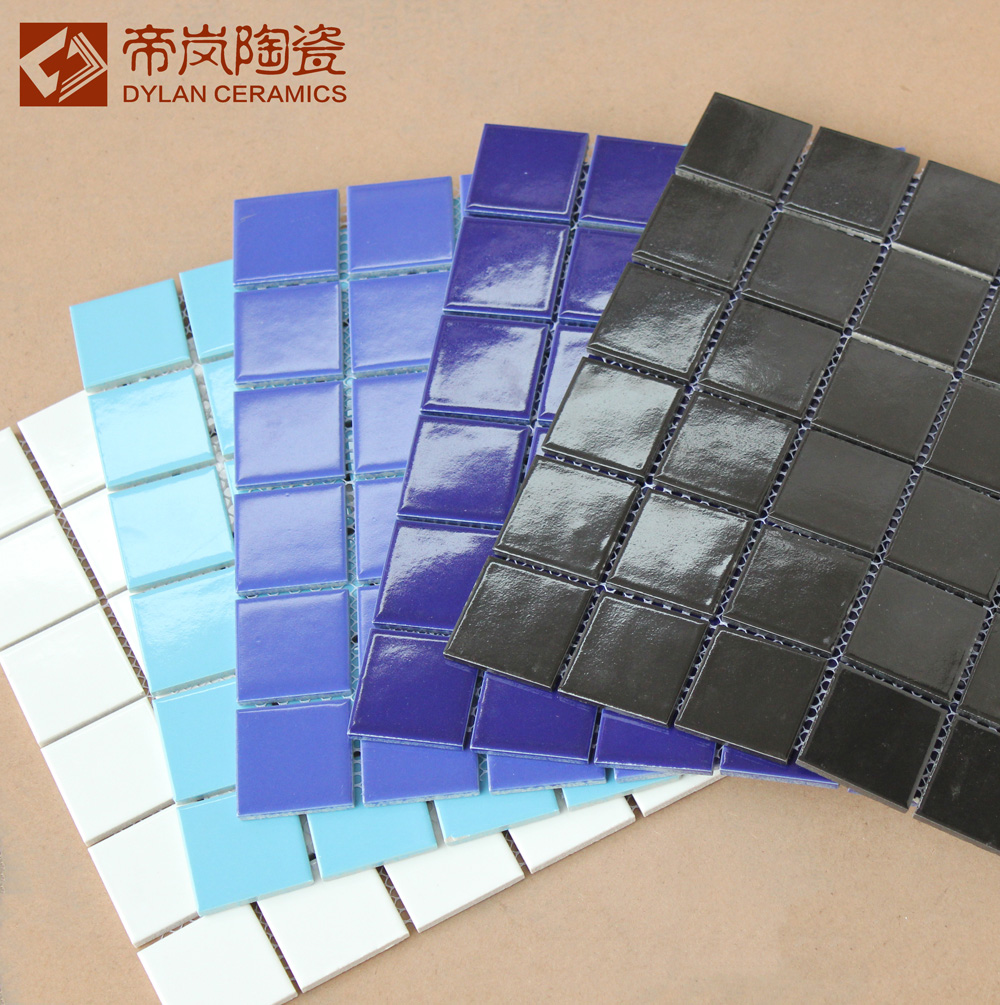

In this article, I have given you a lot of technical information which you may find interesting, but the bottom line is that the major manufacturers of mosaics for swimming pools, such as Artistry in Mosaics and Custom Mosaics make their products specifically to be used in a swimming pool. Keeping your pool in balance will also help prevent the calcium in your pool’s finish from being absorbed into the water. To insure that your mosaics stay bright and beautiful for the life of your pool, it is important to make sure your pool’s chemistry is always “in balance”. As with water absorption, the glass glaze on the top surface of the mosaic helps prevent damage to the mosaics caused by chemicals. The tiles are then inspected to see if there is any visible damage. In this procedure, tiles are soaked in a test solution for 24 hours at 74 F. Tiles are tested using the ASTM C650 testing procedure. Unfortunately, the Swimming Pool Mosaics do not get that treatment, so the Swimming Pool Mosaics must be completely impervious to the pool’s chemicals.

If you think about it, every time your children or yourself are finished swimming one of the first things you do is rinse off the chlorine and other chemicals so they will not remain on your body after drying. Besides the water, your pool contains chlorine, acid, and a few other chemicals which help prevent algae and fungus from growing. The Swimming Pool Mosaics that live in your swimming pool live in a very harsh environment…for them, not you. Done properly, your mosaic will then be completely sealed. This material will seep into the space between each mosaic piece thereby further bonding the mosaic to the pool’s surface. During the application of the finish coat, every mosaic is covered with the finish coat material. Both the mosaic bottom surface and the pool surface must be porous enough to absorb the thinset thereby making a strong bond between the two surfaces. Your mosaic is attached to the pool surface, gunite, using a material referred to as thinset. The sides and bottom of each mosaic piece are not glazed. This colored glass glaze is what gives the Swimming Pool Mosaics their brilliant color which will last a lifetime. Besides the low absorption rate of the clay used, to further improve the resistance to water absorption of Swimming Pool Tiles, the top surface of all mosaics is made vitreous by covering them with a glass glaze which has a color pigment in the glass. On the other hand, tiles that are going to be immersed in water 24 hours a day, 365 days per year, would require tiles made from materials that have the lowest absorption rate. It makes sense to not use the more expensive clays which have lower absorption rates for an application that does not require low absorption rates. Tiles that are used on a wall in your home do not see much in the way of water if any at all. Why the wide differences in absorption rates? Cost and application. Standard wall tiles will absorb about 7% water, while ceramic Swimming Pool Tiles absorb about 3%. Water absorption rates are determined by using the ASTM C373 testing procedure. If you are seriously concerned about your mosaics freezing, then I would suggest getting ones that are specified as Frost Proof Porcelain.

Be sure you review the product’s specification to determine if it is described as “Frost Proof”. As long as your mosaics are well below the freeze depth of your pool, they will be fine, but I still would put only mosaics that are specified as “Frost Proof”. In climates where the temperature drops below freezing for any period, the pool water will most likely freeze. This criterion is especially important if you are putting your mosaics in an area that may freeze, such as steps, swim-out, pool seats, waterfall features above the pool’s water surface, outdoor table tops, outdoor kitchen backsplashes, or on the pool deck. The way tiles are tested, using the ASTM C1026 testing procedure, is to freeze the tile to negative 0.4 F and then quickly heat it to 50 – 60 F. If your tile were to absorb too much water and freezes, then your tile will crack…not good. As you know, when water freezes it expands. The amount of water that is absorbed is important, especially for outdoor use.

Now unless you would like to dig through the ASTM standards for various applications of ceramic tile, just know that the major manufacturers of Swimming Pool Mosaics use porcelain-type clay and a glass glaze to cover the surface of the tile. The primary difference between Swimming Pool Mosaic tile and wall or floor tile is their resistance to Freezing, amount of Water Absorption, and resistance to Chemicals.


 0 kommentar(er)
0 kommentar(er)
